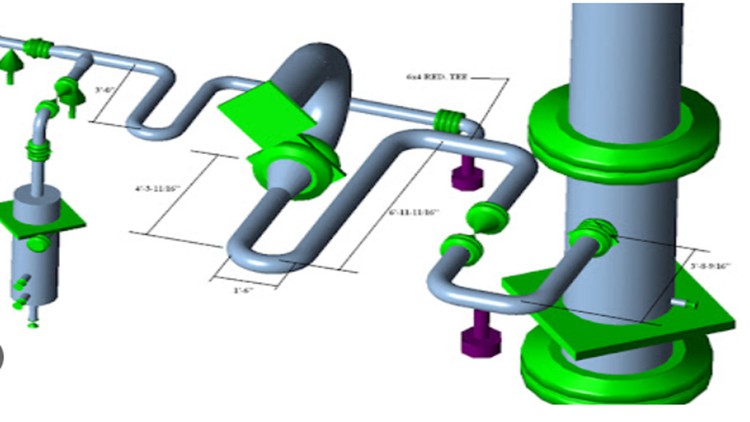
Design Basis for Piping Stress Analysis
What you will learn
Scope of Pipe Stress Design Basis
Critical Line Selection
Design Considerations
Types of Piping Loads
Allowable Loads on Nozzles
Guidelines for Supporting
Methods of Analysis
Caesar II Settings
Various attachments
Description
The “Pipe Stress Analysis Design Basis” course is designed to equip engineers and professionals with the essential knowledge and skills required for conducting thorough pipe stress analysis in various industrial settings. The course covers a comprehensive range of topics, from understanding the scope and reference documents to the practical application of analysis methods using Caesar II software. Participants will gain insights into critical line selection, design considerations, and the evaluation of different types of piping loads.
General Section:
- Scope: Understanding the boundaries and objectives of pipe stress analysis in the context of engineering projects.
- Reference Documents: Familiarization with relevant industry standards, codes, and guidelines essential for accurate stress analysis.
- Metrological Data: Learning how to collect and utilize metrological data for precise analysis.
Codes & Standards:
- Overview and interpretation of industry codes and standards governing pipe stress analysis.
Critical Line Selection:
- Identifying and prioritizing critical piping systems for in-depth stress analysis.
Design Consideration:
- Exploring the key design considerations that impact the performance and integrity of piping systems under various operating conditions.
Types of Piping Loads:
- In-depth exploration of different types of loads (thermal, pressure, external, etc.) acting on piping systems and their impact on structural integrity.
Friction Factor:
- Understanding the role of friction in pipe stress analysis and its implications on system performance.
Guidelines for Supporting:
- Guidelines and best practices for proper pipe support design to ensure stability and prevent excessive stress.
Allowable Loads on Equipment Nozzles:
- Determining and adhering to allowable loads on equipment nozzles to avoid damage and maintain equipment integrity.
Methods of Analysis:
- Introduction to various methods of pipe stress analysis, including static and dynamic analysis approaches.
Caesar II Settings:
- Practical training on configuring and utilizing Caesar II software for efficient pipe stress analysis.
Load Cases:
- Understanding and defining different load cases to simulate real-world operating conditions and assess the system response.
Various Attachments:
- Examining different types of pipe attachments and their impact on stress distribution.
Major Learnings:
- Comprehensive Understanding of Pipe Stress Analysis: Participants will develop a thorough understanding of the principles, methods, and considerations involved in pipe stress analysis.
- Application of Industry Codes and Standards: Participants will learn how to apply relevant industry codes and standards to ensure compliance and safety in pipe stress analysis.
- Critical Line Identification: The ability to identify and prioritize critical piping systems for focused analysis, allowing for efficient resource allocation.
- Practical Use of Caesar II Software: Hands-on experience with Caesar II software settings, enabling participants to confidently perform pipe stress analysis in real-world scenarios.
- Optimized Design Considerations: Participants will gain insights into designing piping systems with optimized configurations, considering factors such as load distribution and support design.
- Equipment Integrity: Understanding and adhering to allowable loads on equipment nozzles to safeguard equipment integrity and prevent failures.
- Efficient Load Case Definition: Participants will learn to define and analyze various load cases, simulating different operating conditions and ensuring the robustness of the piping system.
- Compliance with Guidelines for Supporting: Mastery of guidelines and best practices for proper pipe support design, minimizing stress and ensuring system stability.
- Accurate Friction Factor Assessment: Participants will be equipped to accurately assess and incorporate friction factors into their analysis, understanding their impact on system performance.
- Holistic Approach to Piping Loads: A holistic understanding of the different types of piping loads and their collective impact on the structural integrity of piping systems.
Content